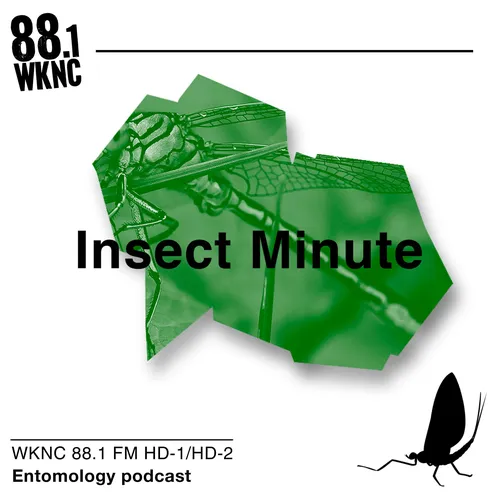The Wonderful World of Bees!
- Author
- WKNC 88.1 | NC State Student Radio
- Published
- Thu 21 Jun 2012
- Episode Link
- https://share.transistor.fm/s/37776e06
Bees are in the order Hymenoptera which also includes wasps, ants and sawflies. Bees and wasps are commonly confused with one another or perceived as names that are interchangeable. Bees and wasps share some attributes; like a similar body plan and they are both holometabolous insects. (A much cuter explanation of metamorphosis) There is one very big thing that sets them apart, their diets! Bees are strictly vegan, preferring to forage on pollen and nectar, whereas most wasps mix other arthropods into their diets.
Common Misconceptions:- Bees bite: Well, not usually. Bees have mandibles but they do not typically use them in defense. The main mode of defense is the stinger, a modified egg-laying structure, found only in females. Males are largely defenseless.
- Bees and Wasps are the same thing: It’s true that they are related and very similar anatomically, but there are some major differences. As mentioned above, their diet. Most bees are much fuzzier than wasps, having branched hairs that help them collect pollen.
- All bees live in hives: Honey bees do, but most bees are solitary which means they live on their own provisioning their brood cells with pollen and nectar. They typically rest on the backs of leaves, in crevices, or in their unfinished brood cell.
- Bees attack people: When a honey bee hive is disturbed the bees may give chase, but most bees will not. In this instance the bees are defending their hive and are attempting to scare off a perceived danger to the colony. Typically bees, including foraging honey bees, are quite docile and are unlikely to react to your presence. In my studies working with bees, I have petted a bee on it abdomen while it foraged and it responded by simply flying away.
- Bees are only black and yellow: So not true!! Many are black with some hue of yellow, but they come in a rainbow of colors. Check out this beautiful metallic green sweat bee. Gorgeous!
Transcript of Insect Minute 1 – Bees:
Hi this is Heather with your Insect Minute brought to you by WKNC and the NC State Insect Museum.
When you think of bees you may immediately think honey bee or perhaps the fuzzy bumble bee or a wood loving carpenter bee that is boring holes into your back porch as I speak.
BUT BEES ARE SO MUCH MORE DIVERSE!
You may be surprised to find out that there are over 20,000 different species of bees in the world! and that there are over 3500 here in the United States. Most bees are not social like honey bees. They may live as solitary insects or in small groups with a queen and a handful of female offspring to assist in collecting pollen and nectar for the next generation.
Bees also come in a myriad of colors…
We are all familiar with yellow and black bees, but they also come in green, blue, purple, and even rainbow! It is their diversity that makes them able to occupy many different habitats and act as effective pollinators!
If you’d like to learn more about the diverse world of bees visit the museum’s website at insectmuseum.org where you find out about our museum and read our blog where we talk about interesting stuff going on in the world of entomology.
